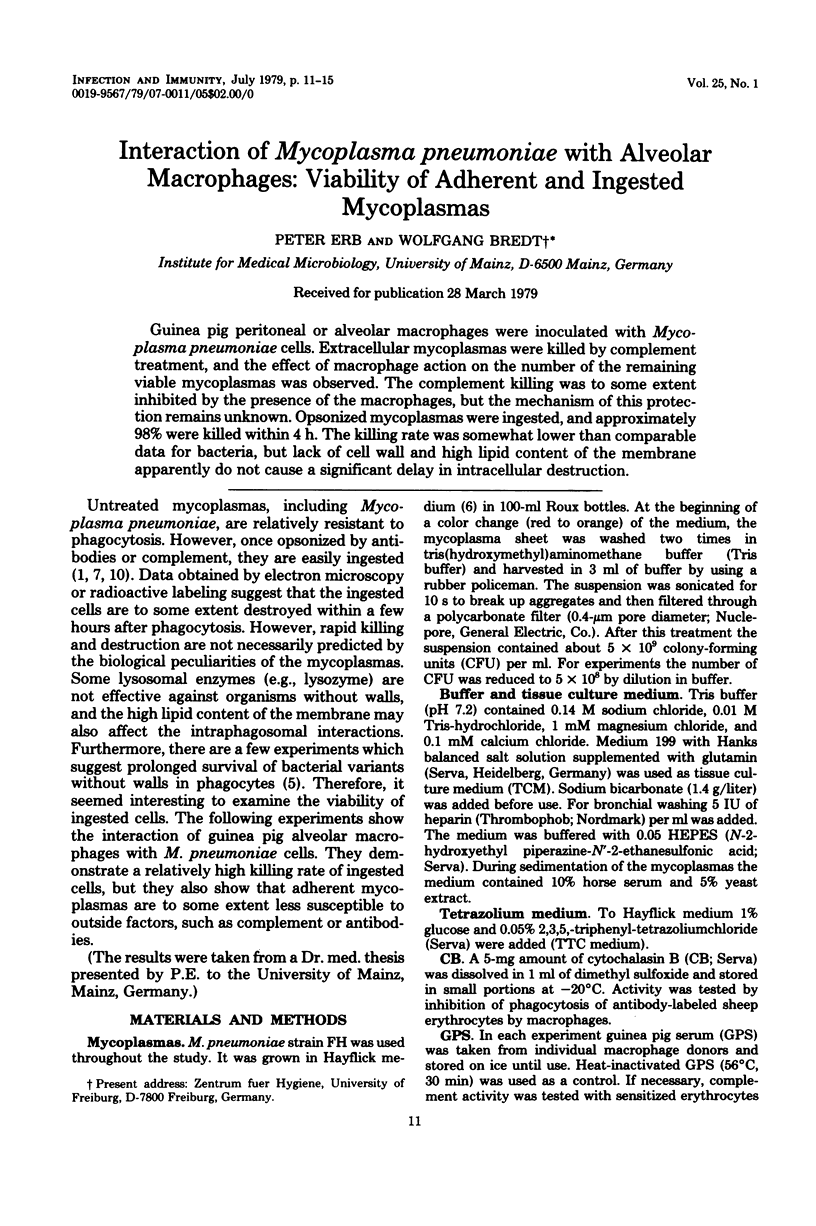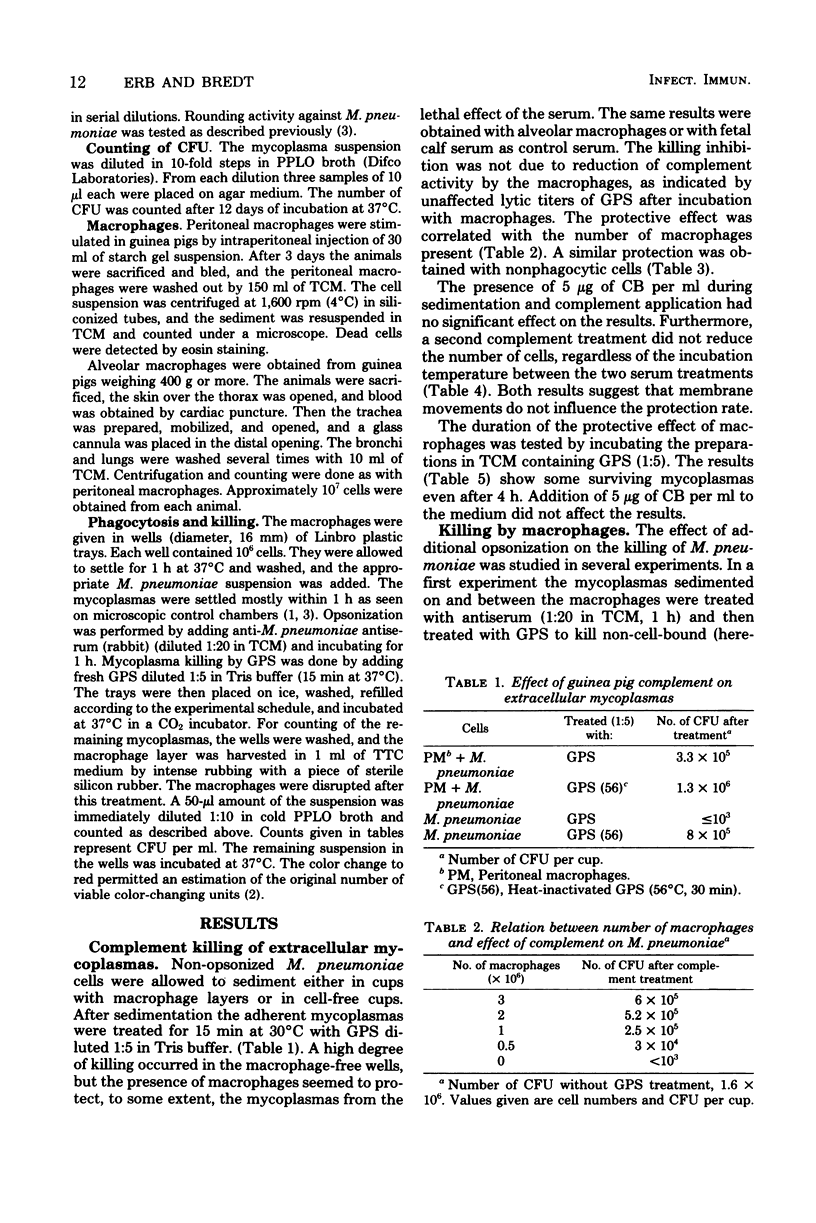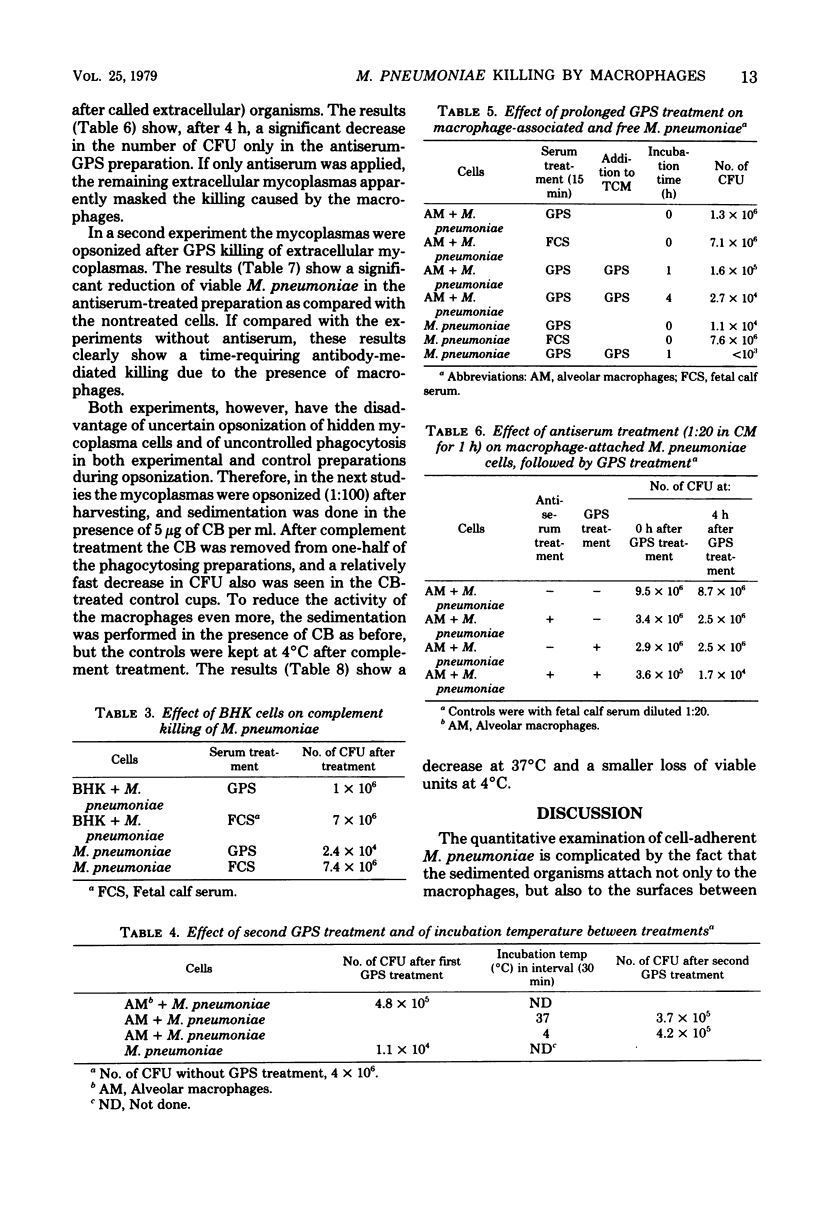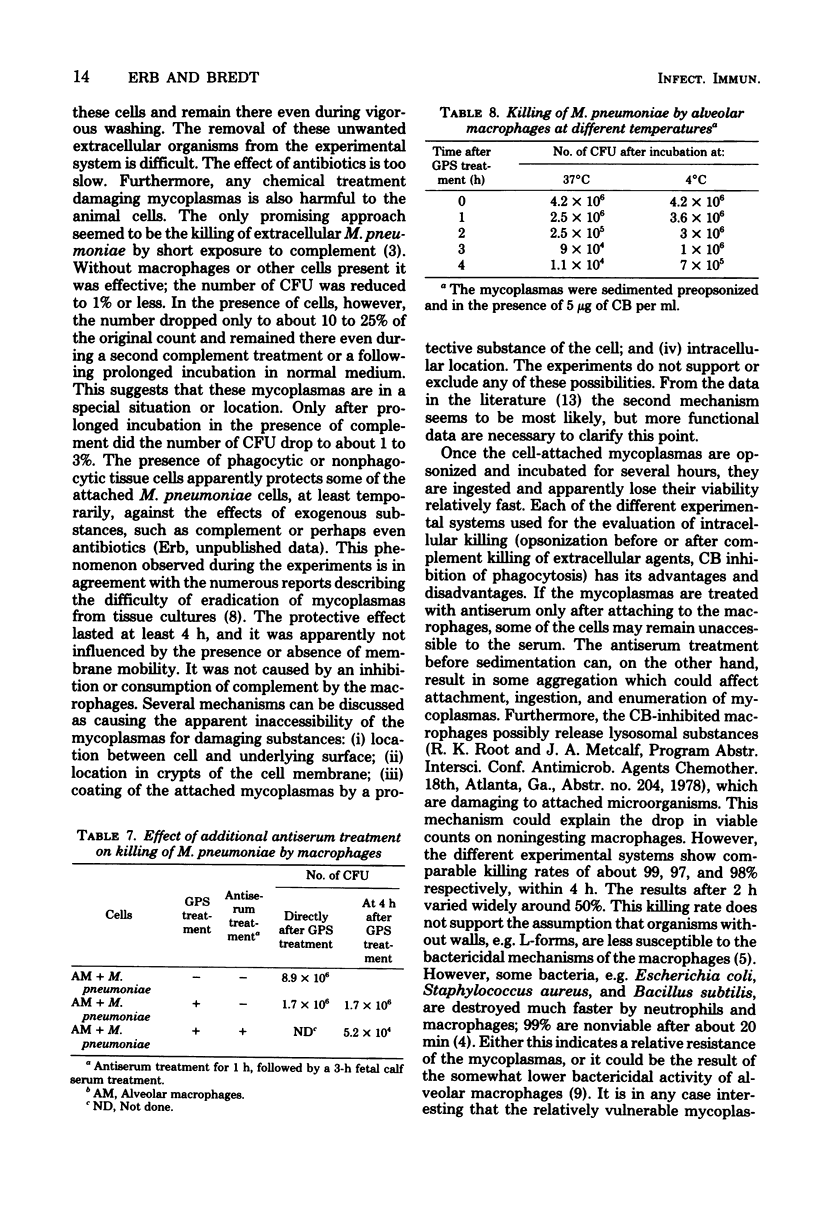Abstract
Guinea pig peritoneal or alveolar macrophages were inoculated with Mycoplasma pneumoniae cells. Extracellular mycoplasms were killed by complement treatment, and the effect of macrophage action on the number of the remaining viable mycoplasmas was observed. The complement killing was to some extent inhibited by the presence of the macrophages, but the mechanism of this protection remains unknown. Opsonized mycoplasmas were ingested, and approximately 98% were killed within 4 h. The killing rate was somewhat lower than comparable data for bacteria, but lack of cell wall and high lipid content of the membrane apparently do not cause a significant delay in intracellular destruction.
Full text
PDF




Selected References
These references are in PubMed. This may not be the complete list of references from this article.
- Bredt W., Bitter-Suermann D. Interactions between Mycoplasma pneumoniae and guinea pig complement. Infect Immun. 1975 Mar;11(3):497–504. doi: 10.1128/iai.11.3.497-504.1975. [DOI] [PMC free article] [PubMed] [Google Scholar]
- Bredt W. Estimation of Mycoplasma pneumoniae inoculum size by rate of tetrazolium reduction. J Clin Microbiol. 1976 Jul;4(1):92–94. doi: 10.1128/jcm.4.1.92-94.1976. [DOI] [PMC free article] [PubMed] [Google Scholar]
- Bredt W. Phagocytosis by macrophages of mycoplasma pneumoniae after opsonization by complement. Infect Immun. 1975 Sep;12(3):694–695. doi: 10.1128/iai.12.3.694-695.1975. [DOI] [PMC free article] [PubMed] [Google Scholar]
- COHN Z. A. The fate of bacteria within phagocytic cells. I. The degradation of isotopically labeled bacteria by polymorphonuclear leucocytes and macrophages. J Exp Med. 1963 Jan 1;117:27–42. doi: 10.1084/jem.117.1.27. [DOI] [PMC free article] [PubMed] [Google Scholar]
- Drach G., Schmitt-Slomska J. Incidence of cellular and humoral factors on group A streptococcal L forms. II. Killing effect of sera and phagocytic cells. Ann Microbiol (Paris) 1973 Dec;124(4):463–476. [PubMed] [Google Scholar]
- Hayflick L. Tissue cultures and mycoplasmas. Tex Rep Biol Med. 1965 Jun;23(Suppl):285+–285+. [PubMed] [Google Scholar]
- Jones T. C., Hirsch J. G. The interaction in vitro of Mycoplasma pulmonis with mouse peritoneal macrophages and L-cells. J Exp Med. 1971 Feb 1;133(2):231–259. doi: 10.1084/jem.133.2.231. [DOI] [PMC free article] [PubMed] [Google Scholar]
- Powell D. A., Clyde W. A., Jr Opsonin-reversible resistance of Mycoplasma pneumoniae to in vitro phagocytosis by alveolar macrophages. Infect Immun. 1975 Mar;11(3):540–550. doi: 10.1128/iai.11.3.540-550.1975. [DOI] [PMC free article] [PubMed] [Google Scholar]
- Shames J. M., George R. B., Holliday W. B., Rasch J. R., Mogabgab W. J. Comparison of antibiotics in the treatment of mycoplasmal pneumonia. Arch Intern Med. 1970 Apr;125(4):680–684. [PubMed] [Google Scholar]
- Smith C. B., Friedewald W. T., Chanock R. M. Shedding of Mycoplasma pneumoniae after tetracycline and erythromycin therapy. N Engl J Med. 1967 May 25;276(21):1172–1175. doi: 10.1056/NEJM196705252762103. [DOI] [PubMed] [Google Scholar]
- Zucker-Franklin D., Davidson M., Thomas L. The interaction of mycoplasmas with mammalian cells. I. HeLa cells, neutrophils, and eosinophils. J Exp Med. 1966 Sep 1;124(3):521–532. doi: 10.1084/jem.124.3.521. [DOI] [PMC free article] [PubMed] [Google Scholar]


